Have you ever felt like your product team is doing a lot of work, but the project isn’t moving anywhere? And then, when you start to analyze how decisions are being made, you get a strong sense that the team is going in the wrong direction? This often happens when a team doesn’t have a strong product strategy that supports their design process.
Building a product without a product plan is like navigating without a map. While there is a chance that you’ll succeed, it isn’t very high. This is why product strategies are so important: rather than relying solely on your intuition in product development, you have a robust roadmap to follow. In this article, learn more about what a product strategy is, and nine steps to develop your own.
What is a product strategy?
Product strategy is the backbone of product design. It tells the full story of the product a team is building, who will use it, and why they will use it. It also defines the course of action that an organization must complete to develop a product, and keeps everyone involved in product development on track.
A product strategy is not the same as a product plan
Many product teams think that a product strategy is a list of desired features with deadlines that teams work toward. In defining what they think is a product strategy, they’ll say something like, “We need to build an ecommerce platform for small and medium-sized businesses with an intuitive interface that will allow sales teams to manage their orders.”
It’s important to understand that this is not a strategy. Instead, it’s a plan of action—a list of things a team wants to build by a deadline. A product plan makes it easier to measure progress and, while every team should have a product plan, it’s not the same as the product strategy.
First, the product plan does not account for uncertainty. Sometimes, instead of immediately jumping into the work of building something, it’s better to take a step back and ask yourself (and your team) why you’re building the product in the first place. What do you want to achieve, and why?
Second, simply having a plan doesn’t guarantee a product's success. Quite often, teams assume that if they follow the plan, they will release a great product. In reality, even the best plan doesn’t guarantee success. When a team locks itself into planning to build a set of features, it stops focusing on the outcomes and instead measures the success of its efforts by its outputs.
The truth is that no product team knows everything about the complexity of the problem it wants to solve. The team needs to be ready to try various approaches to see which works the best.
You might also like: Data Visualization: Interpreting Uncertainty in Product Design.
9 tips for creating a product strategy
Setting a product strategy is not easy. It involves taking a close look at your product or concept and introducing changes in your design process at the right times to shape the direction of product design. Every product is different, and it’s impossible to provide a one-size-fits-all guide on how to create a specific strategy, but it is possible to give recommendations that will help you with that. So here are nine helpful tips to get you and your team started on creating an effective product strategy.
1. Identify your target audience
Poor product-market fit is one of the most common reasons for startup failures. All too many companies hope to uncover their strategy after shipping a product to the market. As a result, they ship a product and measure its impact. It rarely ends well. It’s easy to spot dozens of shipped products that are still looking for users because they were built without a solid understanding of the target audience. Usually, these products were built to solve non-existent problems.
Products are used by people, so putting users and their needs first is always a good idea. That’s why even before you start to create something, you need to have a deep understanding of your target audience—their wants and needs. The latter is especially important.
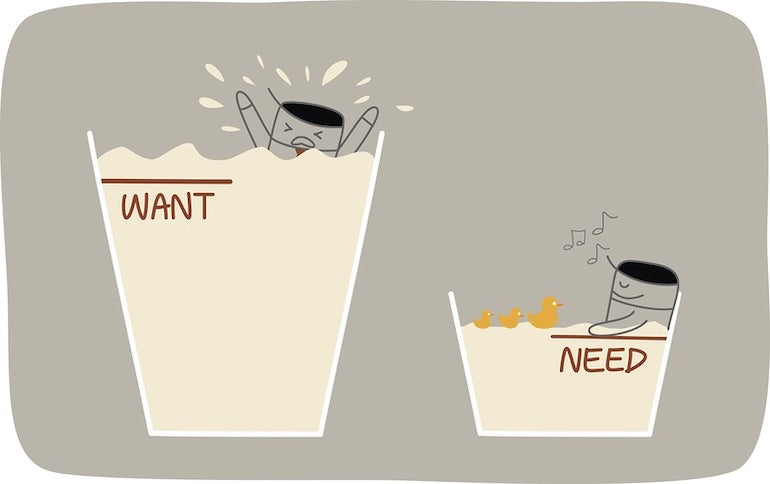
To understand what your potential users need, you need to make user research an integral part of the product design and development lifecycle. Conduct a series of field studies and user interviews to understand who your users are and what they want. Use this information to define personas—archetypal models that reflect the most critical information about your target users. Well-researched personas will act as a proxy for the user.
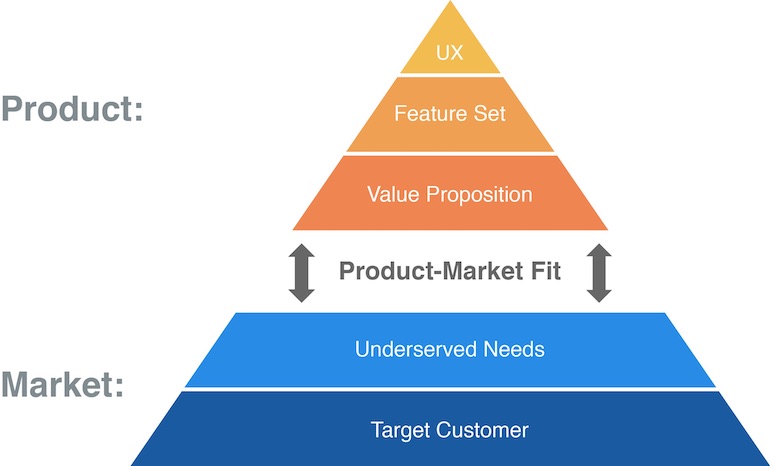
As Laura Klein, author of Lean Startup says, product teams tend to create descriptive personas, not predictive. Leveraging predictive personas makes product design much easier because by analyzing them, product teams learn not only what their users like and dislike, but also come to understand the exact factors that make a person want to become a user.
You might also like: How to Learn More About Your Users with a Contextual Inquiry.
2. Understand the problem
Problem definition plays a crucial role in product strategy. The product you design should help your users solve their problems. You need to not only identify the problem, but also ensure that this problem is worth solving (i.e. that your target audience really needs a solution for this problem and is willing to pay money for it). It’s critical to understand the core reason why you want to build a product (your business motivators) and then evaluate your product decisions in terms of the value they bring to your users (potential conversion).
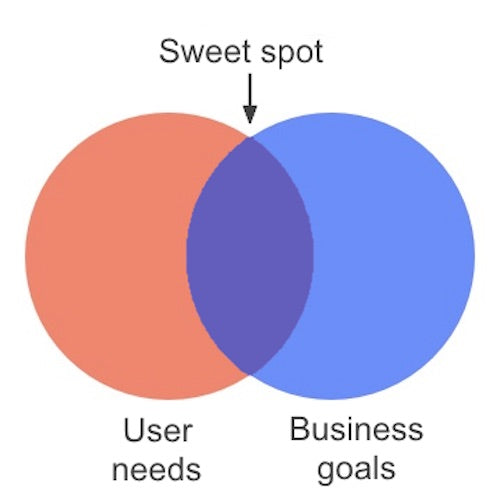
3. Define your product vision
Product strategy defines a product’s journey. As with any journey, you have to have a vision for where you’re headed. Many product teams assume that product vision and product strategy are the same, but in reality, there are two related—but different—concepts.
“Vision is the motivation for creating the product; strategy is a guide on how to do it properly.”
Vision is the high-level, ultimate view of where the business is going, and it’s the reason why you are making a product in the first place. Well-defined product vision becomes the north star for your organization. It makes everyone think big about the things they do when they work on a product.
Below are a few things to remember when defining product vision:
- Identify long-term goals. It’s easy to create a vision when you have an inspiring long-term goal (such as what the product will look like in 2 or 3 years).
- Vision should be inspiring. When it comes to inspiration, it’s vital to get emotional buy-in from team members. That’s why your product vision should win the brain with facts and win the heart with emotions.
- It’s also important to identify your product vision and ensure that everyone in your team fully understands the global goal. Many organizations use video format for this purpose, as it’s much easier to convey the message that way.
4. Define the current state and target condition
For many organizations, it’s possible to define two states—current state (the state of your product experience today), and the target condition (the ultimate user experience toward which you’re aiming). Vision helps you define a destination (target condition).
You can plan your route towards the target destination by focusing on precisely what you need to build. By setting the goal (challenge), you can adjust the direction of your product efforts. It’s essential to invest time in analyzing, measuring, and quantifying challenges before the team starts to work on your project.
This is highlighted well in Melissa Perri’s article on What is Good Product Strategy.
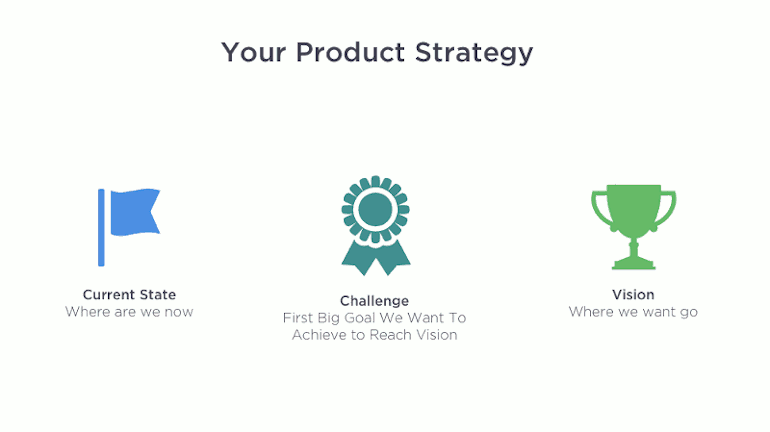
5. State product design principles
Making product decisions is a risky business. No matter how hard you try, there will always be some degree of uncertainty that will make you doubt your decisions. However, you can simplify the decision-making process by introducing a simple yet very powerful tool—product design principles. Product design principles will help you define what good design means in your organization. Well-defined principles are genuine—they reflect your product design philosophy.
For example, one of the design principles of Medium (a popular blogging platform) is “direction over choice.” The Medium design team relied on this principle while they were working on the Medium editor. They purposely traded user interface (layout, type, and color choices) for guidance and direction.
6. Stay in sync with other teams
No matter how good your product design is, it only exists if people know it and follow it. The product strategy should be the result of a cross-functional collaboration between core teams: design, development, marketing, and sales.
“When you ask any person in your organization what you’re building and why, you should get the same answer.”
7. Stay focused
Before you start working on a solution to a problem, you need to develop a deep understanding of the ultimate experience you’re aiming for. Many organizations get this step wrong. While they understand the problem, they think that including more and more features in their product will make them valuable for the target audience. As a result, they are bloating their products with useless, poorly designed features and compromising their user experience (this effect is known in the software world as feature creep).
When Apple introduced the first iPhone back in 2007, they built very few features but implemented them very well. One of the features that we find very important today, copy and paste, was missing in the first version of the iPhone. Copy and paste wasn’t included because it didn’t meet the team’s minimal intended experience. Instead of releasing a buggy feature, they launched the iPhone without, and added the feature only once it met their expectations for its experience.
“Product teams must realize that good product strategy is not about just shipping lots of features.”
A concept called Minimum Loveable Product suggests that it’s necessary to define the few essential functions and implement them very well, so users will actually use them and love them. Below, watch Steve Jobs explain the importance of saying no to feature requests:
8. Define the success metrics
It’s not enough to set a direction—it’s also essential to measure how fast you are moving towards the goal. Metrics help a team measure performance and know if they are on track.
If you’re looking for practical recommendations on how to choose proper metrics, I recommend starting with Objectives and Key Results, or OKRs. In this model, objectives are what you want your company to achieve, and key results are how you intend to measure that objective. What numbers would move? Objectives should be inspiring, while key results should be measurable.
9. Execute the strategy
When you start building a new product, you have a threshold of knowledge. Missing pieces of information will prevent you from establishing an ideal product strategy on Day 1. But starting with solid goals and a willingness to experiment will help you create a well-defined strategy.
“Think of your product strategy not as something set in stone, but more like a living and breathing organism that grows together with your organization.”
Start primitively and build from there. Once you introduce your product strategy, the sooner you get feedback on it, the faster you can iterate.
The product strategy should also be revised systematically. Revise your metrics and adjust tactics when you get information about what works and what does not.
You might also like: 3 Project Management Strategies to Prevent Scope Creep.
The Product Strategy Canvas
Similar to the Business Model Canvas, which helps identify gaps in a business model, the Product Strategy Canvas helps to challenge the product strategy that the organization wants to execute. Product strategy canvases help teams to structure all available information and develop a holistic approach to business strategy.
There are a couple of canvases that can be used for this. First is the Product Strategy Canvas created by Melissa Perri, which is an excellent tool for articulating product strategy.
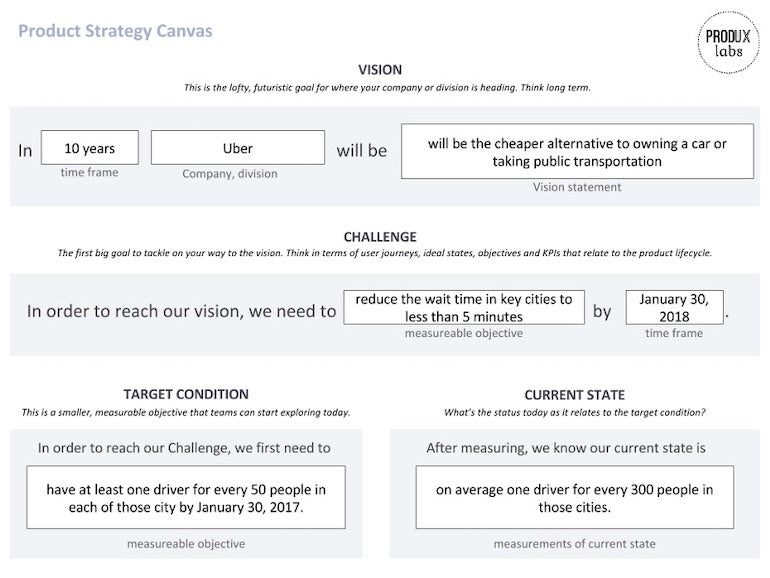
The second is the Strategy Kernel Canvas (PDF) proposed by Chris Butler, which is an excellent tool for sparking a discussion around strategy.

Product strategy defines the user experience
Product strategy should be your number one tool to justify user experience decisions. You must start every product design project by defining the experience that you want people to have with your product or service.
Product strategy will make you focus on achieving the ultimate goal: delivering the right features with the right user experience for the right people.
Read more
- Important Product Updates for Shopify Partners and Developers
- What I Learned From Being My Own Client
- Winning Wholesale Business: Leading B2B Clients into the Digital World
- What You Missed at Generate Conference 2014
- How to Persuade Any Client to Choose Your Design
- Email Deliverability: 5 Ways to Build a Strong Sender Reputation
- Introducing the Next Shopify Partner Accelerator
- How to grow your business by becoming an omnichannel expert
How have you developed product strategies? Share your thoughts in the comments below.

